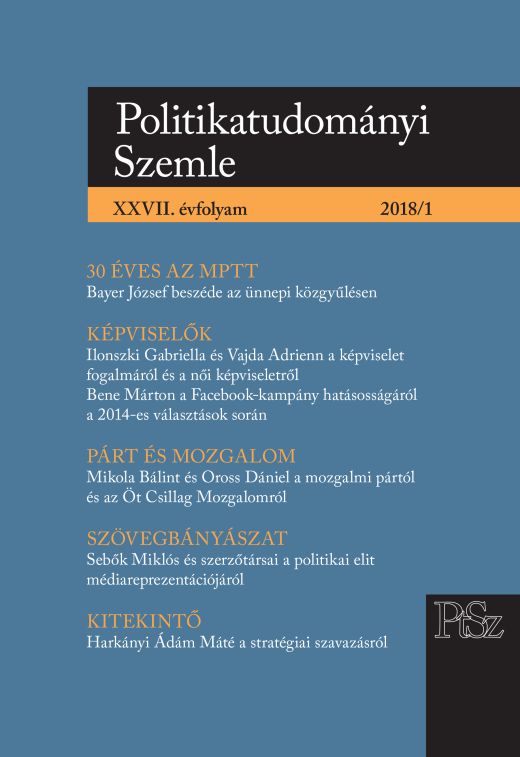A képviselet újrafogalmazása és alkalmazása a női képviseletre. Az abortuszkérdés (2000, 2011)
Reconceptualising Representation. Women’s Representation in the Abortion Issue (2000, 2011)
Author(s): Gabriella Ilonszki, Adrienn VajdaSubject(s): Gender Studies
Published by: MTA Politikai Tudományi Intézete
Keywords: substantive representation; demand representation; the process and output of representation; discriminative institutions; gender neutral; antifeminist
Summary/Abstract: The empirical analysis of women’s substantive representation is still relatively underdeveloped, particularly in new democracies. The article aims to fill in this gap, demonstrating how women’s substantive representation has evolved in Hungary by analysing two concrete legislative initiatives. These are the amendment of Act LXXIX / 1992 on the Protection of Foetal Life (also known as abortion law) in 2000, and Article II of the new constitution (Fundamental Law) ofHungary in 2011. As Article II declares that the foetus shall be protected from the moment of conception this might have opened the abortion debate again. The article first reconsiders the concept of representation. As the party based representation concept has been increasingly under challenge it is justified to broaden the focus and observe who claims that she represents women and how this process is taking place. In this vein the article investigates both the parliamentary and the extra-parliamentary context. Also, it distinguishes the two analytically distinct parts of representation, the process and the outcome, arguing that substantive representation might occur even if the outcome does not serve women’s interests. Analysis of the parliamentary speeches of Members of Parliament regarding the two cases as well as media, civic organisation, and public opinion responses reveal that the substantive representation of women has declined. At the parliamentary level representative claims have become increasingly gender- neutral and anti-feminist; in contrast, gender-conscious attention and approaches have declined. Although the majority of the public remains supportive of women’s self-determination, and civic engagement in this area has increased, their impact remains peripheral in the context of highly gendered institutions. From a theoretical perspective the article’s first major finding is that descriptive representation and substantive representation are closely linked as they are both structured by the gendered context. Substantive representation is constrained by “sheer numbers” that originate in gendered institutions while gendered institutions themselves constrain the representative opportunities of all actors involved. The second important finding is that a shrinking gender divide can be observed. In the first initiative some women appeared as active participants in presenting gender conscious and feminist representative claims. In the second initiative a female perspective could not be heard at all: women either did not participate in the ‘official’ parliamentary context or were advocates of the conservative party line. Women with women’s representative claims have been pushed out of the official arena.
Journal: Politikatudományi Szemle
- Issue Year: XXVII/2018
- Issue No: 1
- Page Range: 17-40
- Page Count: 24
- Language: Hungarian

